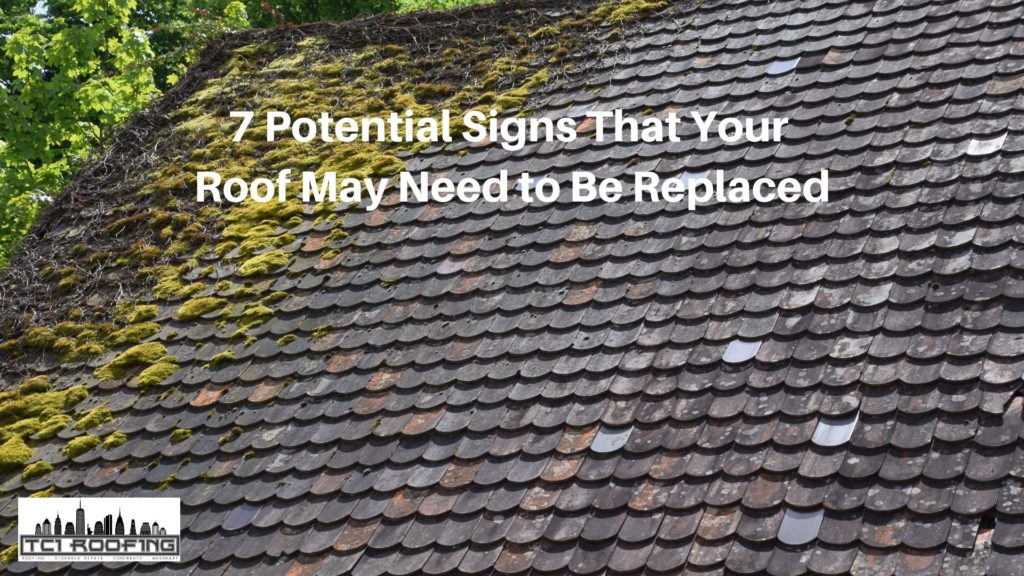The importance of having a durable and reliable roof is truly undeniable. The purpose of a roof is to protect your belongings and daily against weather elements. It would be best if you allow having your roof professionally inspected once in a while to prevent further roof damage soon. If you eventually notice the following signs of potential roof problems discussed below, your roof may need to be replaced as early as possible.
1. Apparent Roof Leaks
Roof leaks are an obvious sign that your roof needs to be replaced, especially if the leaks are already extensive. Check the underside of your roof structure in the attic every time it rains heavily to see if there’s water intrusion. You shouldn’t allow essential roof components such as underlayment, gutters, and flashing to become severely damaged.
You should also check if there are ice dams on your roof edge because water can penetrate if the melted snow or rain water cannot flow properly to the gutters. Also, check if the water is overflowing in the gutters and downspouts of your house. It would cause the water may get inside through window openings and ceilings. Keeping a regular inspection will resolve many of your roof problems in the future.
2. Broken or Missing Shingles
Heavy rain and snow can destroy shingles, which may result in water penetration and roof decay. Some shingles may also crimp rapidly due to the presence of extreme heat and moisture. Curled shingles are a result of poor ventilation in the attic and incorrect practice of double layering. Double layering of shingles only offers temporary solutions and may weaken other adjacent shingles.
Roof replacement through additional layering is cheaper, but this may significantly contribute to the early deterioration of your roof. If you notice some broken shingles after a storm, it’s best to call a professional roofer to have your roof thoroughly inspected. Aside from this, don’t forget to check gutters and flashing as leaks may also come from here.
3. Mold or Mildew Growth
If you notice mildew or moss on the walls and ceiling, it can sign roof leaks. However, it can also be a sign of plumbing problems. Ensure your home is well-ventilated and there are no leaking pipes in your bathrooms to minimize this. REctifying these growth problems will save you from costly repairs.
Because your roof is permanently exposed to weather elements, you should expect it to develop algae, molds, and mildew in various areas from gutters to attic floors. Algae are harmless in general, but molds and mildew can cause health problems, especially in people with respiratory issues. In addition, if they are ignored for prolonged periods, your roof will deteriorate quickly in no time.
4. Rotting
A rotting roof can be a potential source of various structural problems inside your roof, particularly underlayment and roof frames. Wood frames may rot when they are continuously exposed to heavy moisture for long periods, resulting in fungal growth. Also, consider checking for stains and rots on the walls, ceiling, and other house areas. As discussed earlier, the heavy presence of molds, algae, and moss are signs of roof leaks that need enough attention.
5. Frequency of Repairs
Roof repairs are inevitable, but if you get your roof frequently repaired, this can significantly contribute to the rapid depreciation of the roof. Asphalt shingles, for example, shouldn’t be overloaded with new shingles for the third time because the sheathing layers on the shingles below are already damaged. Consider roof replacement if the damage is extensive enough and may no longer be repaired through patching jobs.
6. Reduced Energy Efficiency
The energy efficiency of your roof is incredibly affected if the insulation is already damaged. Roof leaks also may cause the temperature of your indoor environment to fluctuate, especially in extreme weather scenarios. It is also possible that the protective coating of your roof is damaged, causing your electricity bills to increase further.
7. Life Expectancy
Roof age is a huge factor whether you need to replace your roof or still have it repaired. If your current roof is approaching 20 years, replacement should form part of your considerations, particularly if you’re experiencing recurring issues with your roof. Plus, outdated or worn-out roof materials give your house an ugly appearance.
However, if the roof is still in good condition after 20 years, a repair can still be an option. To make sure your roof is still in good shape, contact a professional roofer and subject your roof to a comprehensive inspection. With this, you can firmly decide when to have your roof be replaced entirely.
If the roof leaks are only confined to your roof’s isolated areas, your local roofers may still repair them. Still, consider having your roof inspected by a certified roofing New York contractor to find out Its current condition. A roof inspection is always included in the list of services of roofing companies New York, so you should utilize this service before proceeding to formal negotiation.

